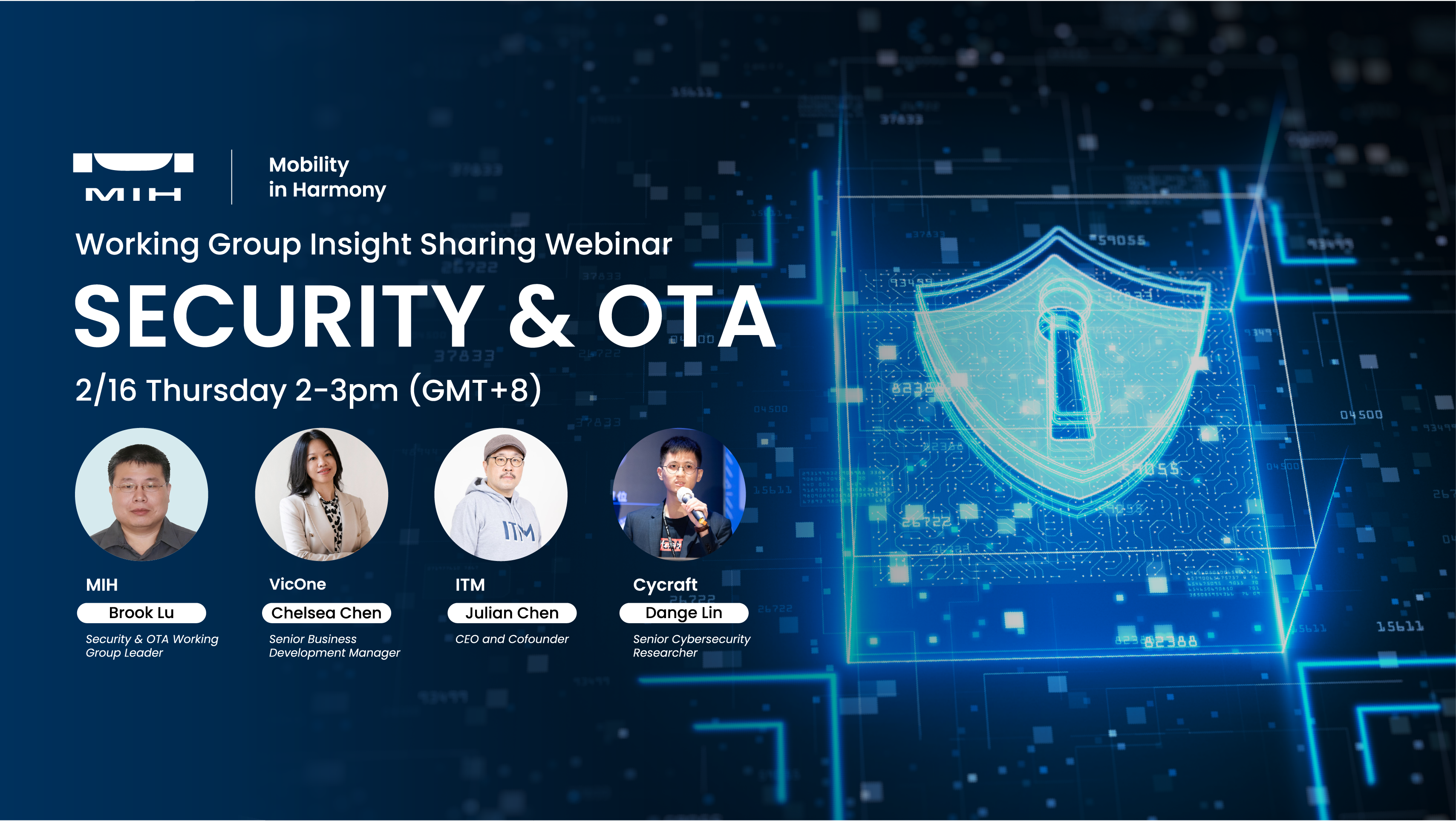The automotive industry attaches great importance to safety, it not only requires many tests and certifications to ensure the safety and performance of the vehicle, but the vehicle also needs to meet the standards set by the country or region where it is sold. As cars enter the era of digitalization and electrification, testings and certifications become more complicated. Therefore, MIH has established a Testing & Certification Working Group. In this article, Ted Lian, MIH's Technical Development Consultant, will share with you the insight and goals of the working group.
There are 14 working groups in MIH Consortium currently discussing standardization and cutting-edge technology in their respective technical fields. The task of MIH Testing & Certification Working Group is to assist other working groups and formulate testing and certification standards.
For example, one of the main discussions in the Powertrain Working Group is the two-speed gearbox. This technology is now mainly used in cutting-edge sports cars. However, what testing and certification are required when this technology is applied to electric vehicles? That's what the Testing and Certification Working Group does. Therefore, the Test Certification Working Group participates in the discussions of other working groups. Technological development is always faster than regulations. When new technologies are still developing, we have to conceive the content of testing and certification. When the working group puts forward the development results, there must be corresponding testing and certification projects to accelerate the implementation of the technology.
Many leading testing and certification organizations have joined the MIH Testing and Certification Working Group, of which SGS is the current chairman. For example, SGS and UL participate in the Smart Cabin Working Group. NI, UL, and BV in the energy management field. D&V and NI in the powertrain field. DEKRA iST, iST, and SGS in the Autonomy Working Group. The Security & OTA Working Group has SGS, NI, and BV. The Thermal Management Working Group has iST, DEKRA iST, and NI.
The automotive industry has permanently attached great importance to testing and certification. It takes a long time for vehicle manufacturers to certify suppliers for compliance. Once vehicle brands use unreliable parts, they might face the risk of a car recall. They must take it very seriously to avoid huge losses.
Entering the era of electric vehicles, the emphasis on safety never changed. It not only continues the standards that should have existed before but also becomes more complicated, especially in the following three areas: Motor, electric control, and battery: In terms of batteries, the areas involved also include infrastructure such as charging piles and charging stations. In the past, the battery of gasoline vehicles was 36V, which was enough to start the engine, but now the basic charging system of electric vehicles is 400V, and the latest trend is to upgrade to 800V. Changes in the battery system will also affect the management of infrastructure and power plant operations. These are all related to the regulations of the respective markets. The government needs to keep up and formulate new regulations so the EV ecosystem can follow.
Safety: There are many regulations in the automotive industry, such as the well-known EU NCAP vehicle crash test regulations. Why would it be brought up again now? Because electric vehicles use many technological applications, such as autonomous driving and assisted driving, different considerations are required, which makes the test more complicated.
Software: More and more software will inevitably be imported into the car, and it is necessary to deal with the possible loopholes in the software. For example, the United Nations Economic Commission for Europe (UNECE) issued several new regulations on vehicle network security, software updates, and automatic driving regulations: ECE WP.29 Regulation R155 focuses on Cybersecurity, R156 is aimed at OTA software updates, and R157 is aimed at SAE L3 level automatic driving, proposing regulations on Automated Lane Keeping Systems (ALKS). ISO21448, also known as SOTIF (Safety of the Intended Functionality), is to regulate the perception and sensor performance of autonomous driving and semi-autonomous driving in the real environment, such as identifying pedestrians, identifying lanes, and maintaining functional safety when entering tunnels status, etc.
In addition, different countries have different regulations. The testing and certification working group will discuss these regulations. Since many members of the MIH alliance are not from the automotive industry, the purpose of the working group is to help members master relevant testing and certification information and help them understand What kind of regulations should be complied with for different models and entering different markets.
The goal of the MIH alliance is to lower the barriers to entry into the automotive industry through the establishment of standards. Therefore, the testing and certification working group also has several tasks.
First, define the basic requirements of the quality control system and the items of vehicle regulations, and assist MIH members to build relevant capabilities.
Second, help MIH members master the design, development, and inspection capabilities of the automotive industry. For example, the quality control project of the computer industry is different from the requirements of automotive OEM manufacturers. In terms of software, the PC industry is familiar with software maturity management (CMMI). However, the automotive industry has different quality control methods for software suppliers, such as ASPICE, which is a software process evaluation and improvement model commonly used in the automotive industry.
Third, define the quality inspection list so that MIH members can quickly review their supply chain.
Fourth, standardize safety levels, safety requirements, and testing and certification standards, and assist member companies to develop products that can be successfully adopted by automotive customers. The technologies in the EV field are moving forward. Even the experts or institutions with relevant automotive testing experience still need further study. To achieve the standardization goal, we will need to cooperate with more automakers to understand their needs and communicate with them. Then, we can accelerate the standardization of testing and certification and the popularization of electric vehicles.
 Ted Lian, MIH Technical Development Consultant
Ted Lian, MIH Technical Development Consultant
With more than ten years of experience in open source software and hardware and entrepreneurship, Ted specializes in the field of robots and electric vehicle smart cockpits. Ted has written more than ten books and is active in the maker open source community, and is also currently an assistant professor at Chang Gung University.
![[Expert Views] How Tesla Explores its Patent Assets](https://www.mih-ev.org/s3/mih%2Fwp-content%2Fuploads%2F2023%2F01%2FWispro-Expert-Views.png)
Wispro
2023-05-26

MIH Consortium
2023-03-20

MIH Consortium
2023-02-22